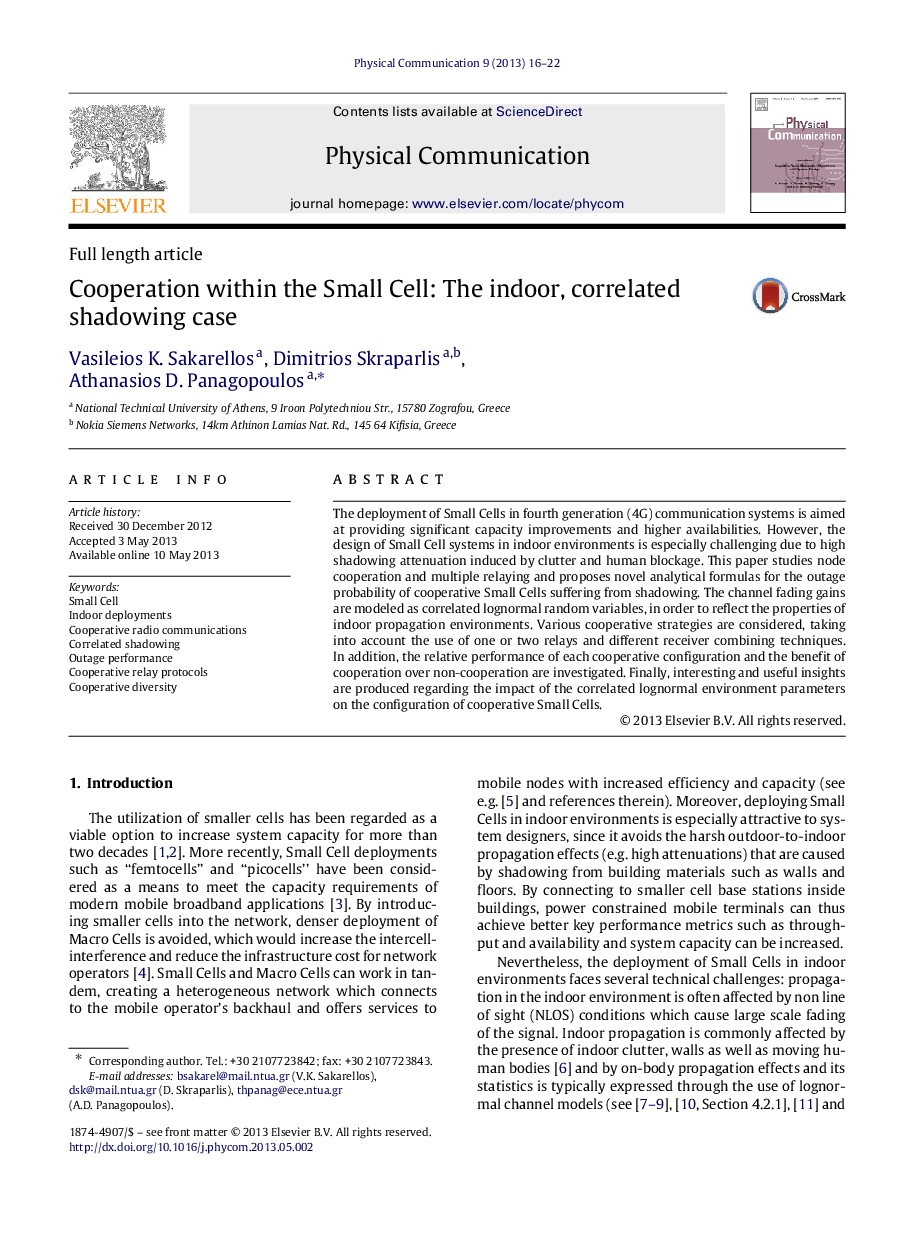| Article ID | Journal | Published Year | Pages | File Type |
|---|---|---|---|---|
| 465809 | Physical Communication | 2013 | 7 Pages |
The deployment of Small Cells in fourth generation (4G) communication systems is aimed at providing significant capacity improvements and higher availabilities. However, the design of Small Cell systems in indoor environments is especially challenging due to high shadowing attenuation induced by clutter and human blockage. This paper studies node cooperation and multiple relaying and proposes novel analytical formulas for the outage probability of cooperative Small Cells suffering from shadowing. The channel fading gains are modeled as correlated lognormal random variables, in order to reflect the properties of indoor propagation environments. Various cooperative strategies are considered, taking into account the use of one or two relays and different receiver combining techniques. In addition, the relative performance of each cooperative configuration and the benefit of cooperation over non-cooperation are investigated. Finally, interesting and useful insights are produced regarding the impact of the correlated lognormal environment parameters on the configuration of cooperative Small Cells.
